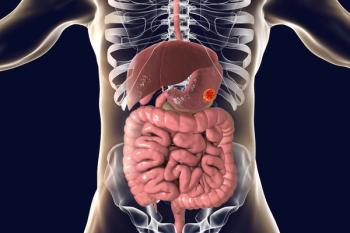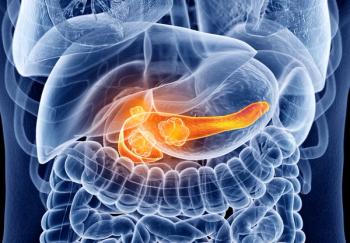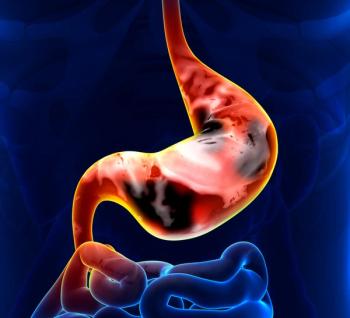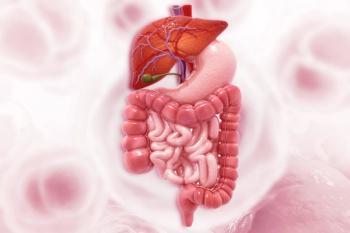
Oncology NEWS International
- Oncology NEWS International Vol 7 No 7
- Volume 7
- Issue 7
Study Shows 6-Month Chemo Regimen Should Be New Colon Cancer Standard
PHILADELPHIA--"Six months of 5-fluorouracil (5-FU) and leucovorin should be the new standard adjuvant therapy for patients with node-positive, high-risk colon cancer," Daniel Haller, MD, said at the annual ASCO meeting.
PHILADELPHIA--"Six months of 5-fluorouracil (5-FU) and leucovorin should be the new standard adjuvant therapy for patients with node-positive, high-risk colon cancer," Daniel Haller, MD, said at the annual ASCO meeting.
This recommendation is based on mature results of a large study showing that 6-month adjuvant regimens of 5-FU and leucovorin are just as effective as 12 months for preventing colon cancer recurrence, and that levamisole adds no significant benefit.
Dr. Haller, of the University of Pennsylvania Cancer Center, reported the final results from intergroup study INT-0089 on behalf of the Eastern Cooperative Oncology Group, the Southwest Oncology Group, and the Cancer and Leukemia Group B.
The study had four treatment arms: two with 6-month regimens of 5-FU/leucovorin (low dose and high dose); one with a standard 12-month regimen of 5-FU/levamisole; and one with a 6-month regimen of all three drugs. Total accrual was 3,759 patients with high-risk stage II or III colon cancer. Median follow-up is 5 years.
The main findings of this study (see Table) are as follows:
There was no difference in overall survival between patients treated with regimens combining 5-FU with either low-dose or high-dose leucovorin.
Results with the 6-month regimens were equivalent to those with the 12-month regimen.
Adding levamisole to 5-FU and low-dose leucovorin did not significantly increase 5-year overall survival over rates with 5-FU/leucovorin alone.
For all patients, the only significant treatment difference was in overall survival for those treated with 5-FU/levamisole vs 5-FU/low-dose leucovorin/levamisole. However, the addition of levamisole to the 5-FU/low-dose leucovorin regimen conferred an insignificant 1% improvement in overall survival.
Therefore, although the three-drug combination was statistically superior in overall survival to standard 5-FU/levamisole, it was not more effective than 5-FU/low-dose leucovorin alone.
There were no significant differences for any of the treatment comparisons for the patients with high-risk stage II disease. However, these patients comprised only 20% of the study population.
"From a statistical standpoint, levamisole happens to have been part of the best arm of the study. From a clinical relevancy standpoint, the absence of a relatively expensive drug with more toxicity for little, if any, benefit would make the deletion of levamisole perfectly appropriate," Dr. Haller said.
He pointed out that subset analysis found more side effects in the elderly, but these side effects did not affect compliance. He noted that the worse prognosis observed in patients over age 65 appeared to be due to disease recurrence, not to concurrent health problems or adverse effects of treatment.
"Patients with stage II or stage III colon cancer have a 50% to 75% chance of cure with surgery alone, but that also means that they have a 25% to 50% risk of dying of metastatic disease within 5 years after surgery," Dr. Haller said. "Adjuvant therapy can improve that risk, and this trial shows that the shorter duration regimens are at least as effective as a longer treatment program. I think that most people will likely abandon the 12-month 5-FU/levamisole regimen."
Articles in this issue
over 27 years ago
Calling the National Cancer Instituteover 27 years ago
Six Cycles of AT Found Safe in Advanced Breast Cancerover 27 years ago
New Drug Promising in Advanced Pancreatic Cancerover 27 years ago
Herceptin/Chemo Effective in Metastatic Breast Cancerover 27 years ago
Virtual Reality Exhibit Simulates Cancer Fatigueover 27 years ago
New Director of AIDS Researchover 27 years ago
Exhibit Explores Healing Power of Creating Artworkover 27 years ago
Update on Trials of Thrombopoietin for Platelet Recoveryover 27 years ago
Amifostine Reduces Xerostomia After RT for Head and Neck Cancerover 27 years ago
National Survey Documents Gap in Quality of HIV/AIDS CareNewsletter
Stay up to date on recent advances in the multidisciplinary approach to cancer.

















































































